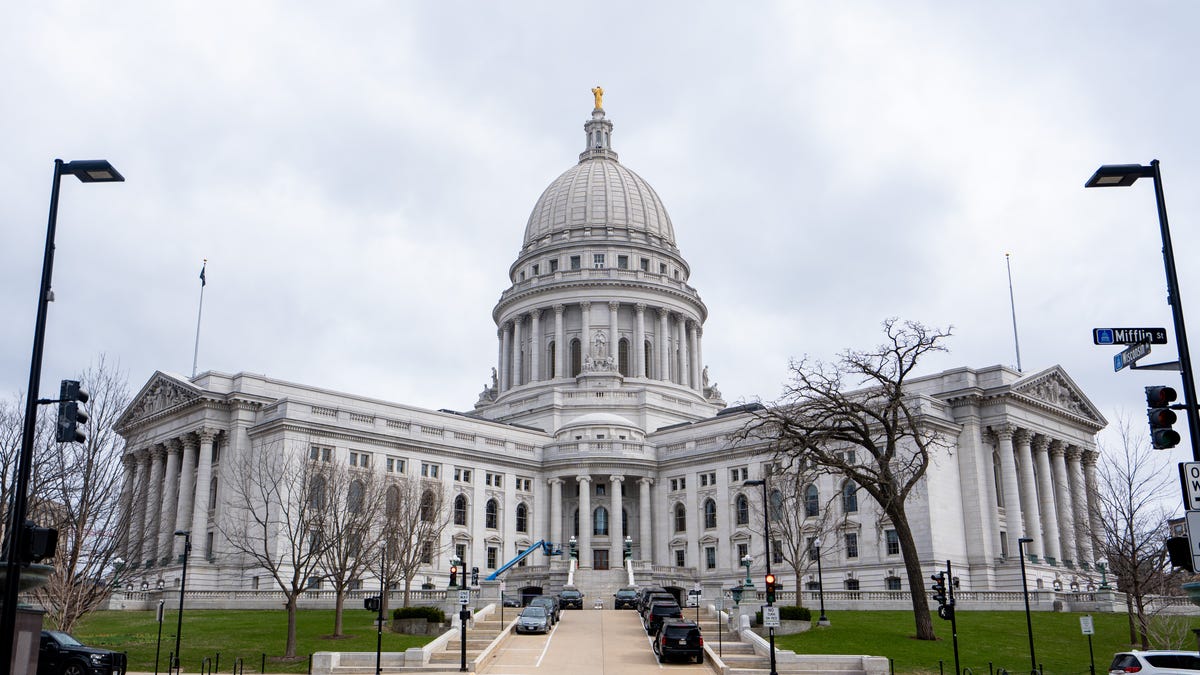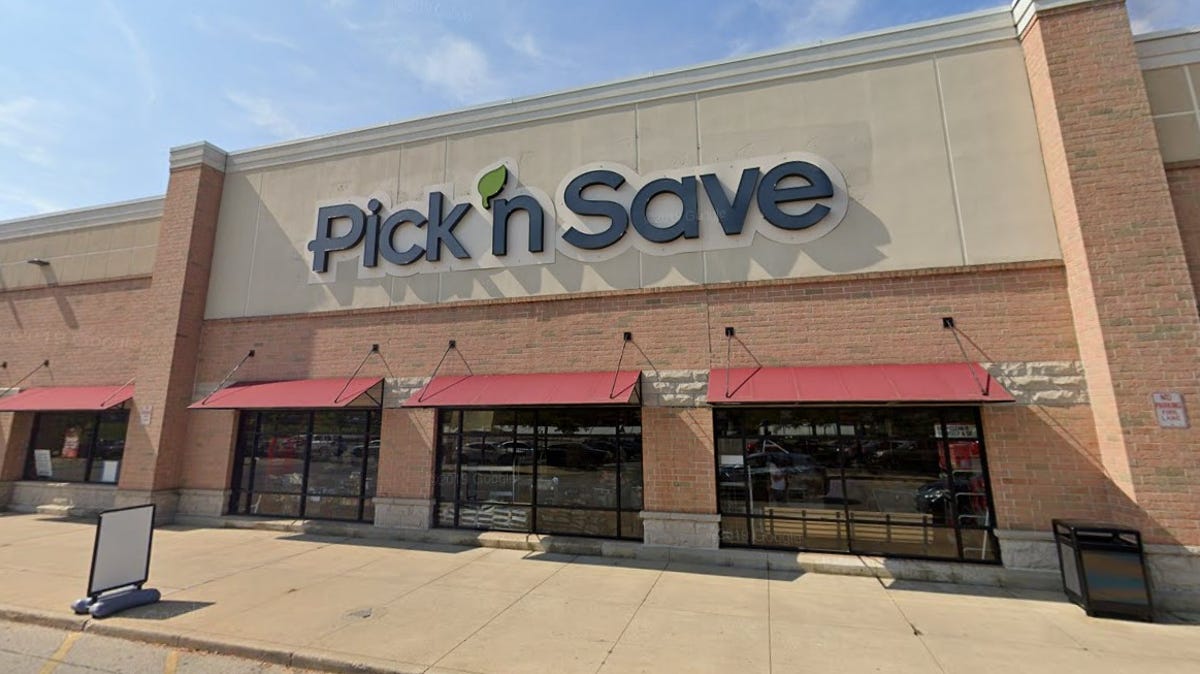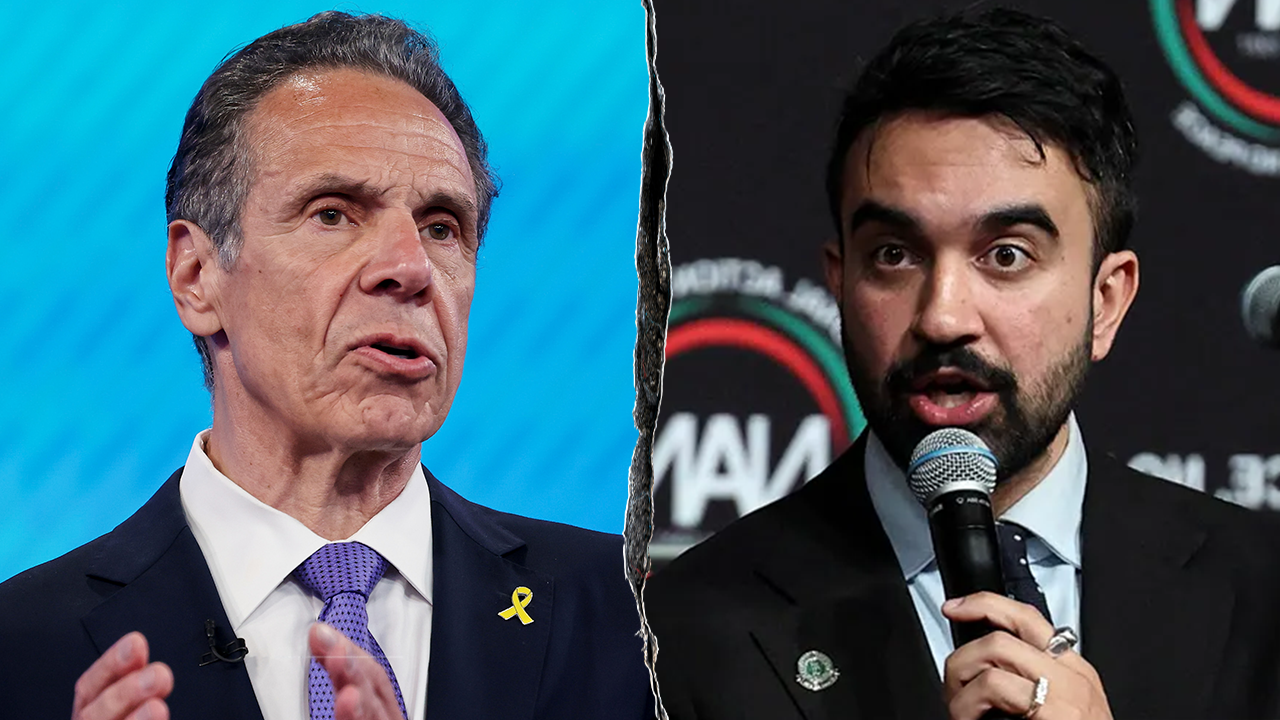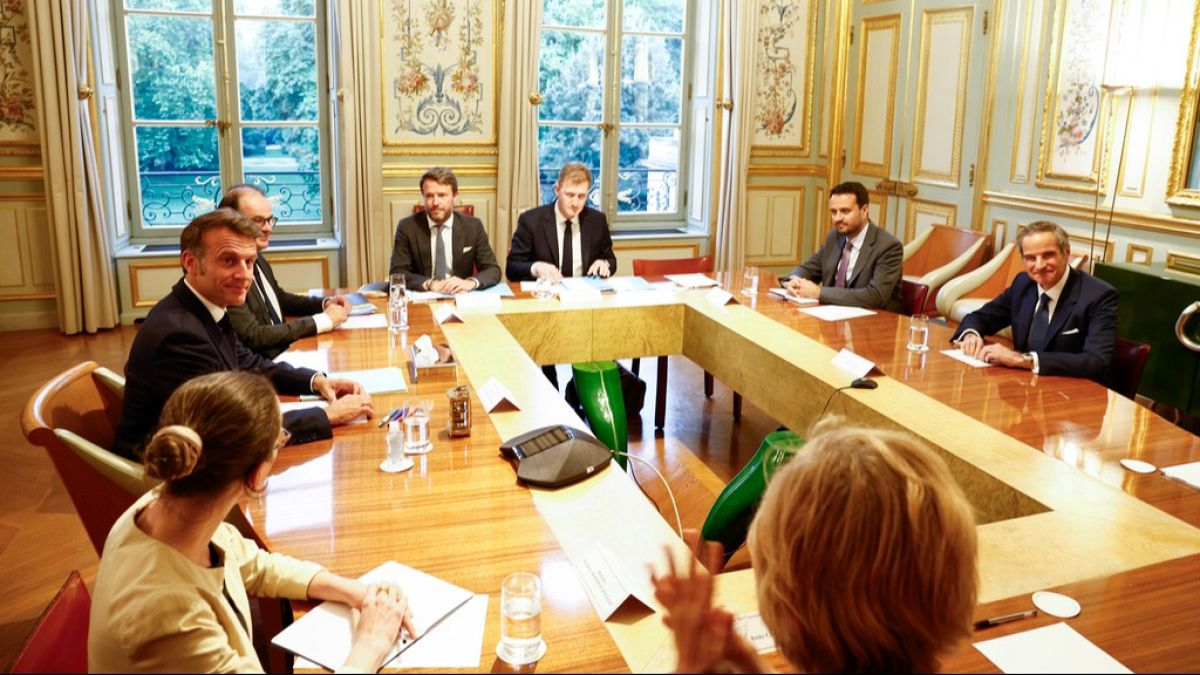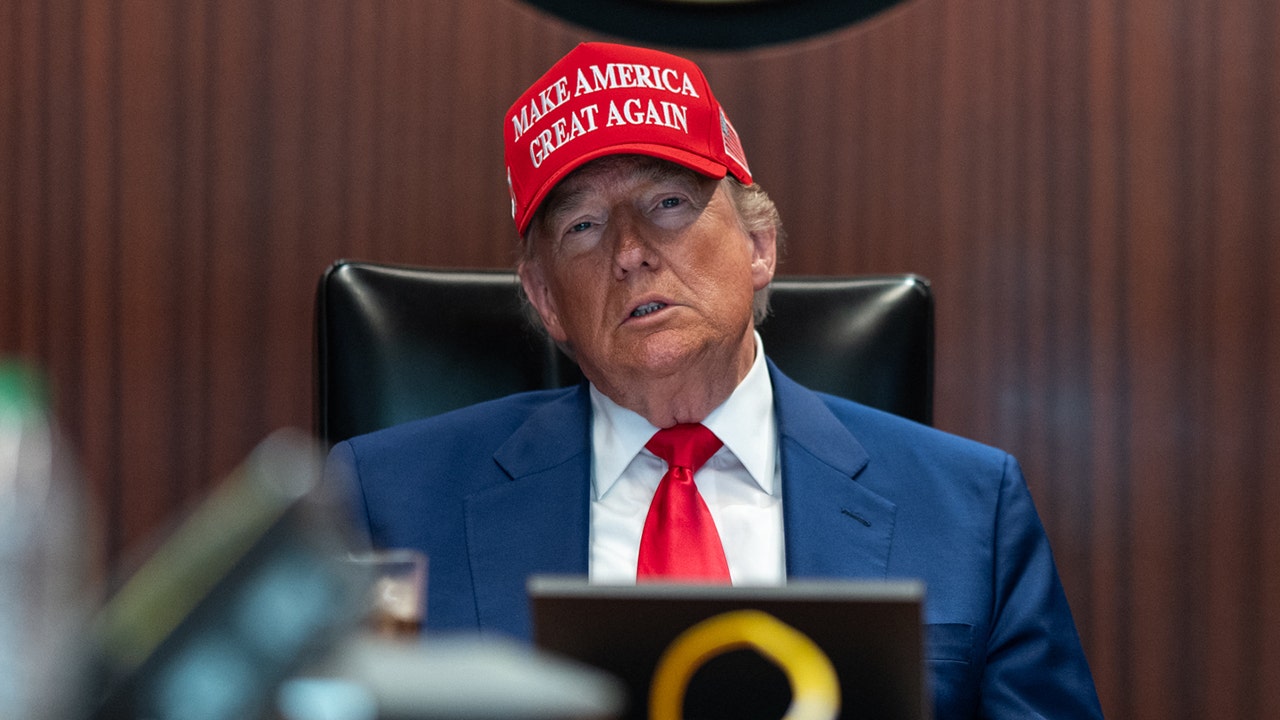Minnesota
Bonds are part of plan to replace key bridge linking Wisconsin, Minnesota
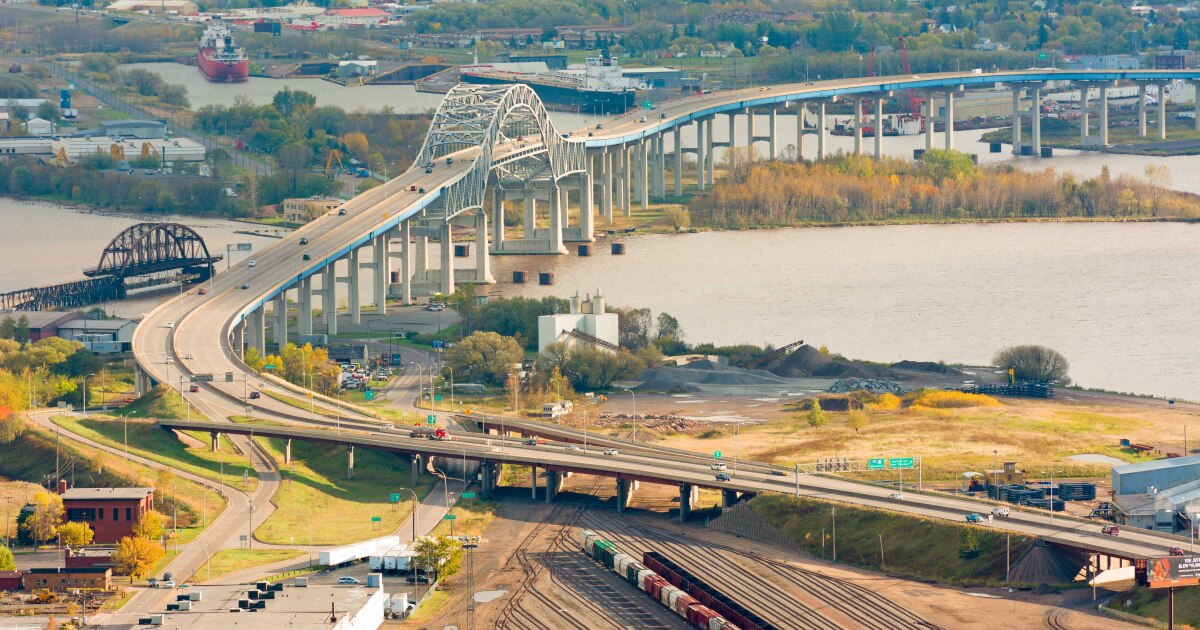
The John A. Blatnik Bridge links Superior, Wisconsin to Duluth, Minnesota, curving across the Saint Louis River between the two cities. But over its 62 years, rust and structural decay have taken a toll on the 7,975-feet-long steel span. So the Minnesota and Wisconsin departments of transportation, which co-own and operate the bridge, are planning to replace it.
State bonds are a key part of that plan, but officials in the two states are also seeking more than $1 billion in federal grants to raze the bridge and build anew. While last year’s federal omnibus spending bill included $7.5 million for the bridge, the two states still have a significant gap to fill.
“At this point in time, knowing what we know, the current [total cost estimate] is $1.8 billion in year of expenditure dollars,” said Pat Huston, assistant district engineer, major projects for the Minnesota Department of Transportation. “It will likely change as we know more.”
Adobe Stock
In addition to requesting federal funding — first through the U.S. Department of Transportation’s Multimodal Project Discretionary Grant program, then more recently through the USDOT’s Bridge Investment Program — each state has committed $400 million toward the costs of replacing the bridge.
“About $200 million of that is from our capital highway improvement program, and $200 million will be from bonds,” said Minnesota’s Huston. The latter $200 million will come from trunk highway bonds authorized in the 2023 legislative session.
Minnesota has been
“This project is vital to regional economic growth, strengthening our national supply chains and the reliability of our transportation network that serves hundreds of communities,” said Minnesota DOT District 1 Communications Director Pippi Mayfield.
For its part, Wisconsin authorized $47.2 million in state funds and $352.8 million in general obligation bonding authority toward the project in its 2023-25 budget.
Wisconsin Capital Finance Director Aaron Heintz said the bonds will be issued in state fiscal year 2026, which begins July 1, 2025.
Fitch Ratings assigns Wisconsin a long-term issuer default rating of AA-plus, Moody’s Investors Service rates it Aa1, Kroll Bond Rating Agency rates Wisconsin GOs AAA and S&P Global Ratings assigns the state a rating of AA-plus.
The usage order of funding that includes federal grants is: first, match requirements of the grant with funding in the form of general obligations; next, federal grant funding; and finally, state funding via bonds.
“The state bonding would first satisfy any matching requirements of the federal grant funding, and then would be used after federal grant funding has been exhausted, with state funding providing the last dollars for the project,” Heintz said.
Planning for the project began in August 2020, and now both states are eager to set their plan in motion. In 2019, officials implemented load restrictions on the bridge: trucks weighing more than 40 tons are barred from crossing. And Blatnik may need to be closed completely before 2030 for safety reasons.
Yet today, more than 33,000 cars and trucks traverse the bridge daily.
“I’m proud to partner with Wisconsin Governor Tony Evers as we urge our federal partners to support this project that will foster regional economic growth, bolster our national supply chains, and strengthen the reliability of our transportation network that serves hundreds of communities between our states,” Minnesota Gov. Tim Walz said in a statement.
“These grant applications and deepening shows of support – from local communities and elected officials in both states – demonstrate how important this project is and why we must act with urgency,” added Wisconsin DOT Secretary Craig Thompson.
In
The Wisconsin DOTs estimate phased construction could

Minnesota
Ernesto Londoño on the Personal Cost of Minnesota’s Political Killings
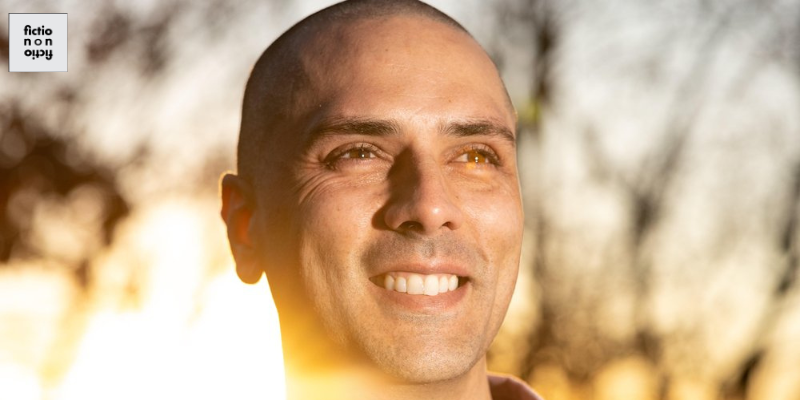
New York Times reporter Ernesto Londoño joins co-hosts V.V. Ganeshananthan and Whitney Terrell to discuss the recent murder of Minnesota state representative Melissa Hortman, which has made headlines as local politicians in the U.S. are rarely targeted for assassination. Londoño describes how a gunman posing as law enforcement went to the homes of several state politicians, killing Hortman and her husband Mark and gravely injuring Democratic state senator John Hoffman and his wife Yvette. Londoño recounts how the No Kings Rally at the Minnesota capitol later that day honored the crime’s victims in addition to protesting President Trump. Londoño details the alleged attacker’s background and debunks conspiracy theories about possible motives. Comparing the current circumstances to his own childhood in Colombia, where political attacks on the local level were common, Londoño discusses how Trump “redrew the rules of acceptable political discourse,” and how increasing violence against lawmakers may impact who is willing to serve.
To hear the full episode, subscribe through iTunes, Google Play, Stitcher, Spotify, or your favorite podcast app (include the forward slashes when searching). You can also listen by streaming from the player below. Check out video versions of our interviews on the Fiction/Non/Fiction Instagram account, the Fiction/Non/Fiction YouTube Channel, and our show website: https://www.fnfpodcast.net/. This podcast is produced by V.V. Ganeshananthan, Whitney Terrell, Hunter Murray, and Janet Reed.
Ernesto Londoño
Suspect in Minnesota Attacks Was a Doomsday Prepper, Investigator Says • Scenes From a Vigil for Victims of the Minnesota Shooting • What We Know About How the Minnesota Assassination Case May Unfold • Melissa Hortman, Minnesota Lawmaker Killed in Shooting, Is Remembered by Colleagues • Trippy: The Peril and Promise of Medicinal Psychedelics
Others
The Death of a Senator: Tommy Burks and Byron (Low Tax) Looper | nashvillescene.com (2018)
EXCERPT FROM A CONVERSATION WITH ERNESTO LONDOÑO
Ernesto Londoño: The very first time I went to the Capitol when I moved to Minnesota in 2012— 2022, pardon me— I was struck that there’s no metal detectors, no security screening to get into the Capitol. When I went to shake hands with the governor early on in my tenure here, and when I’ve gone to see the attorney general or meet lawmakers, it is not a heavily fortified space. It is very different than, for instance, walking into the U.S. Capitol or a federal building, where you do have to go, at the very least, through a metal detector.
Just on that front, I think there’s a recognition that greater security may be an order in a city and in a state where there’s long been a presumption that it was unlikely that people like them and elected officials like them could be targets. On the other hand, there’s always been an ease of finding out where your elected representative lives. When they filed paperwork to run for office, they need to disclose where they live to make sure they’re eligible to run in their district, and those are public records. I think now, as people absorb the shock of what has happened, there’s also a lot of conversations about whether there should be broader, better, layers of security, protecting them from people who may do them harm.
V.V. Ganeshananthan: Just a point of fact for our listeners, Minnesota is a conceal and carry state. So on my campus, for example, they will say things like, “No arms on these premises.” This is often posted on restaurants, etc. When I moved here, I was, like, the last time I saw this posted on a building was in northern Sri Lanka, on a nonprofit’s door where it’s really a sign for militants, right? But it’s here because it’s a conceal and carry state, so that’s the other bit of context.
Whitney Terrell: I just was gonna say that one of the reasons why you don’t have security details around state legislators is that we have had a history of violence against national political figures that is sad, but stretches way back. But—I did a little research here—the last time a state senator was killed was in 2015, and that was Dylann Roof’s attack on Emanuel African Methodist Episcopal Church, which wasn’t directed at that state senator. He just happened to be there. And before that, you have to go back to a guy named Bill Gwatney, who was in the Arkansas State Senate, who was shot by a disgruntled employee, which really also had nothing to do with his political work. And then in 1998, Tommy Burks, a member of the Tennessee State Senate, was killed by his opponent. So in our history, this is very rare, and the localization of that kind of violence, to me, is what’s different and new in many ways about this. You reported, as we mentioned in your bio, on wars in Iraq and Afghanistan—I reported on Iraq as well—as well as serving as a correspondent in Brazil. You were born in Bogotá. In your experience, how common is this, the assassination of really local officials like this, not national officials, in other places and in other times? And what do these killings tell us about the state of democracy in the U.S. now, if anything?
EL: I’ve actually been thinking quite a bit about my upbringing in Colombia this week, because, unfortunately when I was growing up in the ’80s and ’90s, this was pretty common there. You know, politicians, journalists, activists were all fair game in a very messy war. And I think we all know political assassinations are not new. In the United States, there’s been political violence here dating back decades. We’ve had presidents who were gunned down. But I would say this is really kind of shattering a sense of what was reasonably safe in the political arena. We’re starting to come to terms with the fact that political violence is becoming a growing reality at all levels in our country. We had two presidential assassination attempts last year targeting Trump when he was on the campaign trail, one that came dangerously close to blowing out his brain. We had a really scary arson attack targeting the governor of Pennsylvania recently, when he was in his home. We had, of course, the attack against Nancy Pelosi and her husband in their residence.
Elected officials across the country looking at this pattern are increasingly asking themselves, what are my defenses like, and how do I bolster them? At this candlelight vigil I went to on Wednesday, you had a bunch of elected officials. You had members of Congress. Congresswoman Angie Craig was there, and she was working the crowd and hugging people, but she was flanked by two very big and burly bodyguards dressed in black, who were watching her like a hawk and like a ticking bomb was about to go off. I just remember feeling really sad about that scene and what that told us about our politics and the environment and the hyperawareness with which local officials now have to conduct themselves in public.
VVG: I want to ask one more thing about the consequences of Melissa Hortman’s assassination, before moving on to talk about Vince Boelter as a person, and that is this has a specific electoral consequence, which is that the legislature—our local bodies were set up in a certain way, and now, in addition to the great grief of mourning, her as a person, as a public servant, her seat now has to be filled. Can you tell us anything about what—I mean, did he get what he wanted? And then what actually happens now to the seat? She spent her life trying to help people, trying to fill this office, and this office is now going to have to be filled by someone else.
EL: One important piece of context here is, if you take a step back and look at the political reality, in Minnesota, you have a really closely divided legislature, and in the House in particular, voters left that chamber evenly split, which is pretty unusual. There was even a big fight early this year about who would be the speaker and who would kind of wield control of how the chamber operates procedurally. That was the time when Melissa Hortman brokered a deal by which, even though they were evenly split, she said that the senior Republican in the House should get a chance to be speaker for the next two years. Because the legislature wrapped up its session this year and they passed a budget and all the bills were going to pass this year, nothing active is happening in state lawmaking right now.
So procedurally, what would happen is, at some point the governor will convene a special election to fill her seat. Her seat is widely regarded as a very safe Democratic seat, and I think the operating assumption is that somebody will be elected to fill her seat before the legislature reconvenes next year for a new session. So the political implications to this are negligible. In terms of, does it give one party more power than the other, I think it will keep the status quo. The question, though, I think, in the longer term is, how many state lawmakers who are really shaken by this will decide, I’ve done enough, I’ve served enough, I’m out of this. What kind of people will be attracted to politics in this day and age, to serve in jobs that have long paid very, very little and been very, very demanding and are now presumed to be a lot more dangerous than people thought?
Transcribed by Otter.ai. Condensed and edited by Rebecca Kilroy.
Minnesota
Private conservation crucial for Minnesota’s prairie remnants
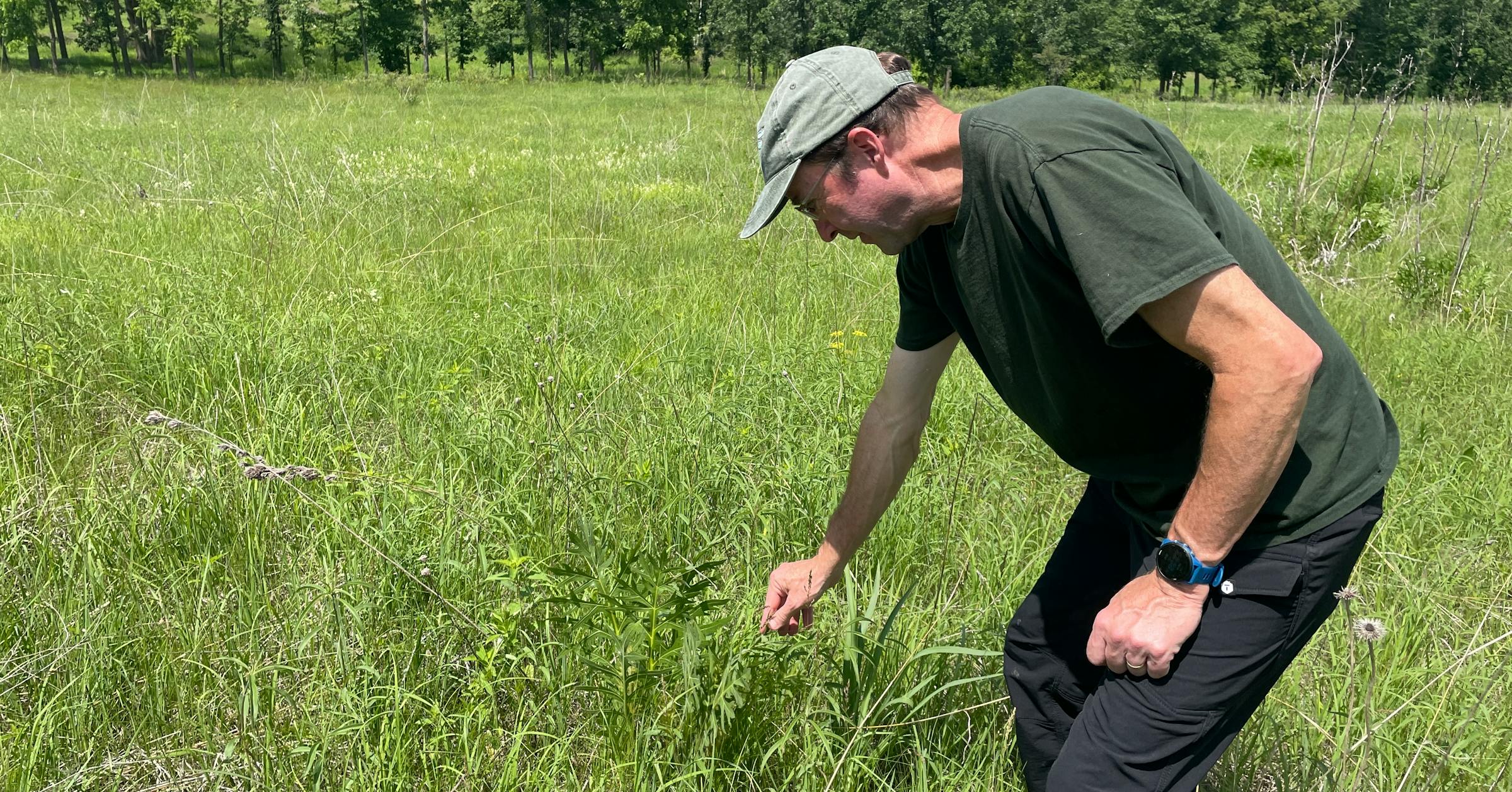
To protect the prairie, property owners have to shield it from herbicide drift and invasive weeds, among other external threats, and they have to mimic natural periodic disturbances through controlled burns and grazing.
Now, Kaster is familiar with the routine that maintaining a prairie requires: He picks out native plants suitable for soil conditions, burns the land once every few years, mows down invasive species, and thins out his trees. With resources available from the DNR and other organizations like the Land Trust, Kaster can easily obtain information on prairie management, including seed sources and services for prairie installation.
Most conservation easement programs in Minnesota — including those run by the Land Trust and the Northern Tallgrass Prairie National Wildlife Refuge — are funded by the state’s Outdoor Heritage Fund, which can cover both the cost of acquiring the easement and the restoration work that follows.
Renay Leone, a landowner based in Elk River, is restoring native prairie on her family farm, backed by grant funding from the Land Trust. Her efforts began four years ago with a modest planting of native grasses. Last winter, she started to scale up the restoration by hiring a company to remove invasive vegetation — the first step in a five-year habitat management plan.
Before she retired, Leone spent a few years working at the Land Trust, where she deepened her passion for learning about prairies, native plantings, and pollinators.
Her best advice for restoring and maintaining a prairie? Patience. “Planting native plants, they might not look like much for a year or two,” she said.
Minnesota
Minnesota named best state for summer road trips in 2025
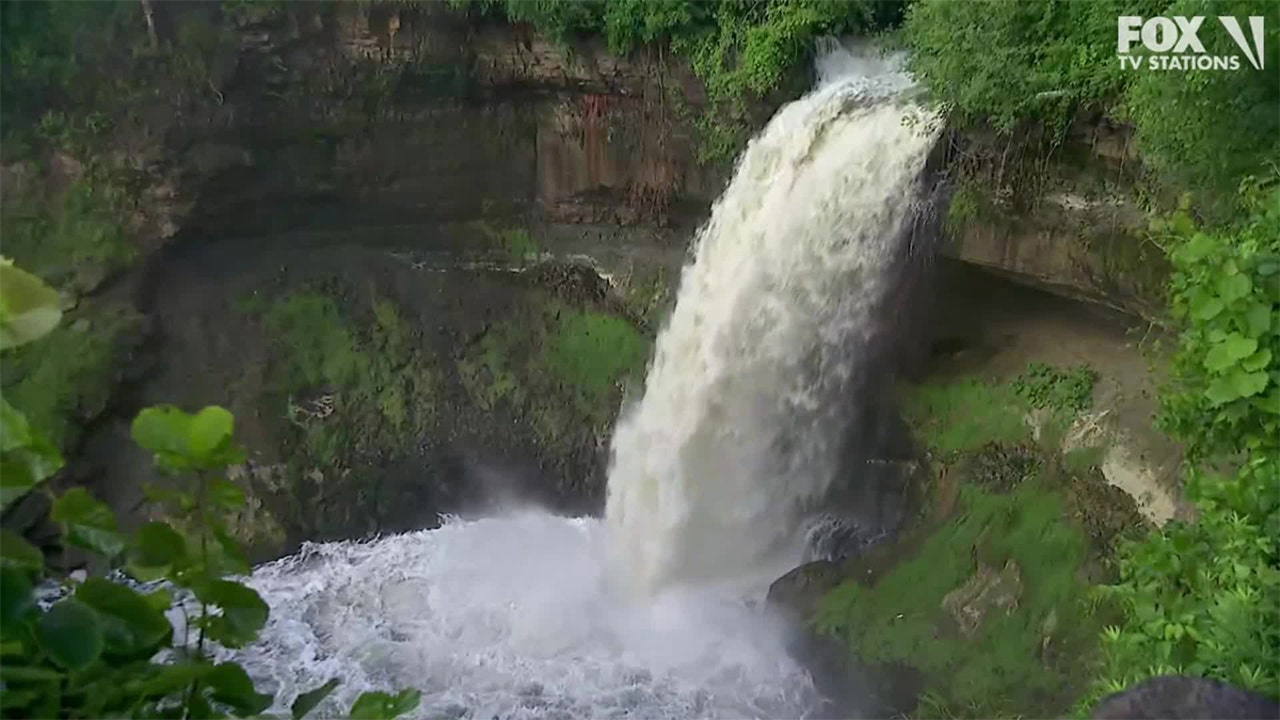
Special Olympics Minnesota Summer Games
The Special Olympics Minnesota Summer Games began on June 10, with FOX 9’s Leon Purvis onsite speaking with coaches and athletes during the opening ceremony.
(FOX 9) – A new list ranking the best road trip destinations for the summer has Minnesota as its top spot – beating out longtime favorites such as Florida and California.
Minnesota named best road-trip destination
What we know:
Known nationally for its 10,000 lakes, Minnesota is a haven for those who love the outdoors, placing it the highest among its composite scores that weighed cost, safety and activities.
According to WalletHub, Minnesota has the fourth-highest spending per capita on parks and recreation, and has the third-most fairs and festivals per capita during the summer.
Spending the night under the stars shouldn’t cost an arm and a leg either – the state has the 12th-lowest camping costs, despite Superior National Forest proposing future rate increases.
Getting where you’re going will run below the national average as well, with gas costing roughly $3.10 per gallon compared to the national average of $3.22, according to AAA.
Other states ranked
Dig deeper:
During the window of warmth that are the summer months, nearly 75% of American adults plan to take some sort of road-trip, with around 33% planning to travel more than 250 miles from home, according to WalletHub data.
The list ranks New York second for summer road-trips due to having an extremely large number of attractions – also being second among most National Historic Landmarks per capita.
Somewhat surprisingly, Ohio ranked third, with the research citing the number of available attractions, especially things like zoos, botanical gardens and amusement parks. Ohio also has the second-highest number of fairs and festivals in the country during the summer months, according to WalletHub.
The Source: Information provided by annual WalletHub study.
-

 Arizona1 week ago
Arizona1 week agoSuspect in Arizona Rangers' death killed by Missouri troopers
-

 Business6 days ago
Business6 days agoDriverless disruption: Tech titans gird for robotaxi wars with new factory and territories
-

 Education1 week ago
Education1 week agoJudge Delays Ruling on Trump Efforts to Bar Harvard’s International Students
-

 Culture1 week ago
Culture1 week agoMatch These Books to Their Movie Versions
-

 Business1 week ago
Business1 week agoWilliam Langewiesche, the ‘Steve McQueen of Journalism,’ Dies at 70
-

 World1 week ago
World1 week agoIAEA warns Israel-Iran conflict threatens nuclear facilities, diplomacy
-
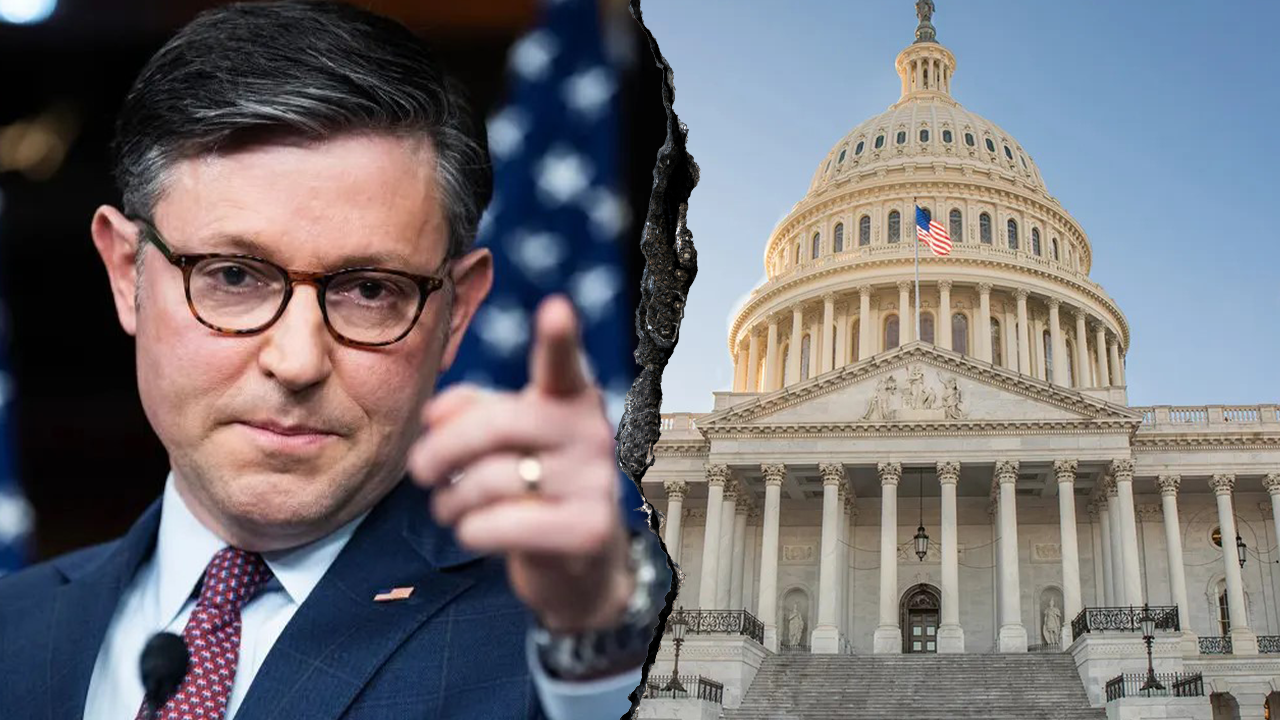
 Politics1 week ago
Politics1 week agoHow Johnson pulled off another impossible win with just 1-vote margin on $9.4B spending cut bill
-

 News1 week ago
News1 week ago‘The Age of Trump’ Enters Its Second Decade
